- Luật
- Hỏi đáp
- Văn bản pháp luật
- Luật Giao Thông Đường Bộ
- Luật Hôn Nhân gia đình
- Luật Hành Chính,khiếu nại tố cáo
- Luật xây dựng
- Luật đất đai,bất động sản
- Luật lao động
- Luật kinh doanh đầu tư
- Luật thương mại
- Luật thuế
- Luật thi hành án
- Luật tố tụng dân sự
- Luật dân sự
- Luật thừa kế
- Luật hình sự
- Văn bản toà án Nghị quyết,án lệ
- Luật chứng khoán
- Video
- NGHIÊN CỨU PHÁP LUẬT
- ĐẦU TƯ CHỨNG KHOÁN
- BIẾN ĐỔI KHÍ HẬU
- Bình luận khoa học hình sự
- Dịch vụ pháp lý
- Tin tức và sự kiện
- Thư giãn

TIN TỨC
fanpage
Thống kê truy cập
- Online: 223
- Hôm nay: 198
- Tháng: 1621
- Tổng truy cập: 5245625
Why the Global Recession Could Last a Long Time
Fears are growing that the worldwide economic downturn could be especially deep and lengthy, with recovery limited by continued anxiety.

St. Peter’s Square in Vatican City (March 19).Credit...Nadia Shira Cohen for The New York Times
LONDON — The world is almost certainly ensnared in a devastating recession delivered by the coronavirus pandemic.
Now, fears are growing that the downturn could be far more punishing and long lasting than initially feared — potentially enduring into next year, and even beyond — as governments intensify restrictions on business to halt the spread of the pandemic, and as fear of the virus reconfigures the very concept of public space, impeding consumer-led economic growth.
The pandemic is above all a public health emergency. So long as human interaction remains dangerous, business cannot responsibly return to normal. And what was normal before may not be anymore. People may be less inclined to jam into crowded restaurants and concert halls even after the virus is contained.
The abrupt halt of commercial activity threatens to impose economic pain so profound and enduring in every region of the world at once that recovery could take years. The losses to companies, many already saturated with debt, risk triggering a financial crisis of cataclysmic proportions.

A line for food coupons in Barcelona, Spain, on Monday.Credit...Samuel Aranda for The New York Times
“I feel like the 2008 financial crisis was just a dry run for this,” said Kenneth S. Rogoff, a Harvard economist and co-author of a history of financial crises, “This Time Is Different: Eight Centuries of Financial Folly.”
“This is already shaping up as the deepest dive on record for the global economy for over 100 years,” he said. “Everything depends on how long it lasts, but if this goes on for a long time, it’s certainly going to be the mother of all financial crises.”
The situation looks uniquely dire in developing countries, which have seen investment rush for the exits this year, sending currencies plummeting, forcing people to pay more for imported food and fuel, and threatening governments with insolvency — all of this while the pandemic itself threatens to overwhelm inadequate medical systems.
Among investors, a hopeful scenario holds currency: The recession will be painful but short-lived, giving way to a robust recovery this year. The global economy is in a temporary deep freeze, the logic goes. Once the virus is contained, enabling people to return to offices and shopping malls, life will snap back to normal. Jets will fill with families going on merely deferred vacations. Factories will resume, fulfilling saved up orders.
But even after the virus is tamed — and no one really knows when that will be — the world that emerges is likely to be choked with trouble, challenging the recovery. Mass joblessness exacts societal costs. Widespread bankruptcy could leave industry in a weakened state, depleted of investment and innovation.

Trafalgar Square in London (March 27).Credit...Andrew Testa for The New York Times
Households may remain agitated and risk averse, making them prone to thrift. Some social distancing measures could remain indefinitely. Consumer spending amounts to roughly two-thirds of economic activity worldwide. If anxiety endures and people are reluctant to spend, expansion will be limited — especially as continued vigilance against the coronavirus may be required for years.
“The psychology won’t just bounce back,” said Charles Dumas, chief economist at TS Lombard, an investment research firm in London. “People have had a real shock. The recovery will be slow, and certain behavior patterns are going to change, if not forever at least for a long while.”
Rising stock prices in the United States have in recent years propelled spending. Millions of people are now filing claims for unemployment benefits, while wealthier households are absorbing the reality of substantially diminished retirement savings.
Americans boosted their rates of savings significantly in the years after the Great Depression. Fear and tarnished credit limited reliance on borrowing. That could happen again.

“The loss of income on the labor front is tremendous,” Mr. Dumas said. “The loss of value in the wealth effect is also very strong.”
The sense of alarm is enhanced by the fact that every inhabited part of the globe is now in trouble.
The United States, the world’s largest economy, is almost certainly in a recession. So is Europe. So probably are significant economies like Canada, Japan, South Korea, Singapore, Brazil, Argentina and Mexico. China, the world’s second-largest economy, is expected to grow by only 2 percent this year, according to TS Lombard, the research firm.
For years, a segment of the economic orthodoxy advanced the notion that globalization came with a built-in insurance policy against collective disaster. So long as some part of the world economy was growing, that supposedly moderated the impact of a downturn in any one country.

Sydney Harbor and the Sydney Opera House (March 26).Credit...Matthew Abbott for The New York Times
The global recession that followed the financial crisis of 2008 beggared that thesis. The current downturn presents an even more extreme event — a worldwide emergency that has left no safe haven.
When the pandemic emerged, initially in central China, it was viewed as a substantial threat to that economy. Even as China closed itself off, conventional wisdom held that, at worst, large international companies like Apple and General Motors would suffer lost sales to Chinese consumers, while manufacturers elsewhere would struggle to secure parts made in Chinese factories.
But then the pandemic spread to Italy and eventually across Europe, threatening factories on the continent. Then came government policies that essentially locked down modern life, business included, while the virus spread to the United States.
“Now, anywhere you look in the global economy we are seeing a hit to domestic demand on top of those supply chain impacts,” said Innes McFee, managing director of macro and investor services at Oxford Economics in London. “It’s incredibly worrying.”

The Dumbo section of Brooklyn (March 28).Credit...Victor J. Blue for The New York Times
Oxford Economics estimates that the global economy will contract marginally this year, before improving by June. But this view is likely to be revised down sharply, Mr. McFee said.
Trillions of dollars in credit and loan guarantees dispensed by central banks and governments in the United States and Europe have perhaps cushioned the most developed economies. That may prevent large numbers of businesses from failing, say economists, while ensuring that workers who lose jobs will be able to stay current on their bills.
“I am attached to the notion that this is a temporary crisis,” said Marie Owens Thomsen, global chief economist at Indosuez Wealth Management in Geneva. “You hit the pause button, and then you hit the start button, and the machine starts running again.”
But that depends on the rescue packages proving effective — no sure thing. In the typical economic shock, government spends money to try to encourage people to go out and spend. In this crisis, the authorities are demanding that people stay inside to limit the virus.
“The longer this goes on, the more likely it is that there will be destruction of productive capacity,” Ms. Owens Thomsen said. “Then, the nature of the crisis morphs from temporary to something a bit more lasting.”
Worldwide, foreign direct investment is on track to decline by 40 percent this year, according to the United Nations Conference on Trade and Development. This threatens “lasting damage to global production networks and supply chains,” said the body’s director of investment and enterprise, James Zhan.
“It will likely take two to three years for most economies to return to their pre-pandemic levels of output,” IHS Markit said in a recent research note.
In developing countries, the consequences are already severe. Not only is capital fleeing, but a plunge in commodity prices — especially oil — is assailing many countries, among them Mexico, Chile and Nigeria. China’s slowdown is rippling out to countries that supply Chinese factories with components, from Indonesia to South Korea.

The Dongfeng Honda auto plant in Wuhan, China (March 23). Credit...Agence France-Presse — Getty Images
Between now and the end of next year, developing countries are on the hook to repay some $2.7 trillion in debt, according to a report released Monday by the U.N. trade body. In normal times, they could afford to roll most of that debt into new loans. But the abrupt exodus of money has prompted investors to charge higher rates of interest for new loans.
The U.N. body called for a $2.5 trillion rescue for developing countries — $1 trillion in loans from the International Monetary Fund, another $1 trillion in debt forgiveness from a broad range of creditors and $500 billion for health recovery.
“The great fear we have for developing countries is that the economic shocks have actually hit most of them before the health shocks have really begin to hit,” said Richard Kozul-Wright, director of the division on globalization and development strategies at the U.N. trade body in Geneva.

A barber waiting for customers in São Paulo, Brazil (March 20).Credit...Victor Moriyama for The New York Times
In the most optimistic view, the fix is already underway. China has effectively contained the virus and is beginning to get back to work, though gradually. If Chinese factories spring back to life, that will ripple out across the globe, generating demand for computer chips made in Taiwan, copper mined in Zambia and soybeans grown in Argentina.
But China’s industry is not immune to global reality. Chinese consumers are an increasingly powerful force, yet cannot spur a full recovery. If Americans are still contending with the pandemic, if South Africa cannot borrow on world markets and if Europe is in recession, that will limit the appetite for Chinese wares.
“If Chinese manufacturing comes back, who exactly are they selling to?” asked Mr. Rogoff, the economist. “How can global growth not take a long-term hit?”
By NyTimes
Các bài viết khác
- Từ sự kiện Tổng biên tập báo TIME Greta Thunberg là Nhân vật của năm 2019 đến báo cáo Biến đổi khí hậu Phúc trình của IPCC báo động đỏ cho nhân loại 82021 (15.01.2020)
- 4 áp lực đè nặng thị trường bất động sản mùa đại dịch (07.04.2020)
- Ế chẳng ai mua, giá nhà liền thổ vẫn tăng mạnh (07.04.2020)
- Diễn biến dịch bệnh khó lường: Sự thanh lọc thị trường sẽ diễn ra rất mạnh trong năm 2020 nhưng cũng là “phép thử” cho doanh nghiệp BĐS (07.04.2020)
- Điểm lại diễn biến chiến dịch 15 ngày làm chậm sự lây lan của chính quyền Trump (07.04.2020)





















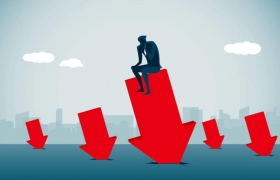
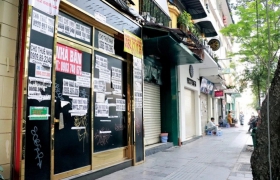

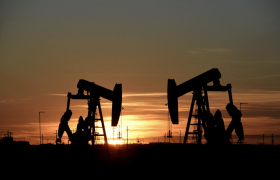
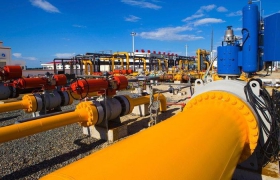






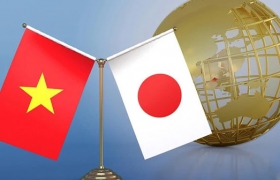
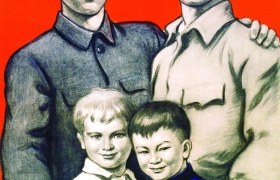
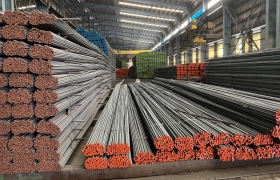















 Yahoo:
Yahoo: 